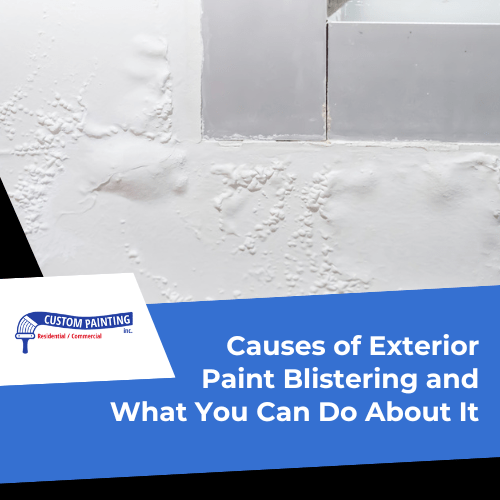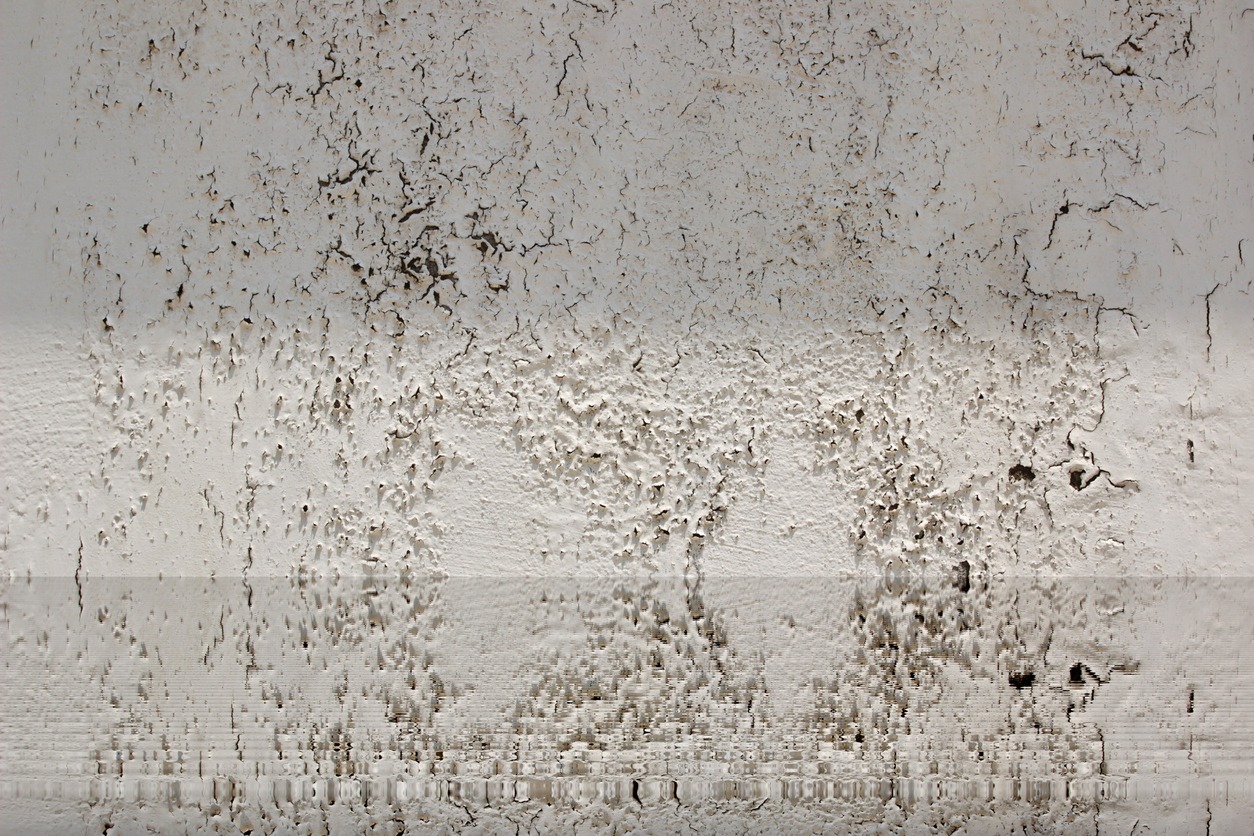Exterior paint blistering can be a frustrating issue for homeowners. This common problem not only affects the appearance of your home but can also signal deeper issues that need addressing. Understanding the causes of paint blistering is the first step toward preventing and solving this aesthetic challenge. From environmental factors to improper application techniques, this article will break down the reasons behind paint blisters and offer practical advice on how to remedy the situation, ensuring that your home’s exterior remains pristine and protected.
What are Paint Blisters? And What are Their Causes?
Paint blisters, often seen as bubbles or bumps beneath the surface of exterior paint, are a common issue that can detract from the smooth, clean appearance of a home’s facade. These blisters occur when paint lifts from the underlying surface, forming pockets that can vary in size and frequency. Understanding how and why these blemishes appear is key to preventing them.
The formation of paint blisters usually stems from one or more specific conditions during or shortly after the paint application process. Moisture is a frequent culprit; when paint is applied to a damp surface or when moisture seeps into the substrate from behind, it can become trapped under the paint layer. As the moisture tries to escape, it pushes against the paint, causing it to lift and form blisters.
Heat is another significant factor. Painting in direct sunlight or on a surface that has become excessively hot can cause the solvent in the paint to evaporate too quickly, trapping gas or air beneath the surface, which then expands and forms blisters.
Improper surface preparation can also lead to blistering. If old paint is not properly removed, or if the surface isn’t adequately cleaned and primed, adhesion problems can occur. Any grease, dirt, or loose paint left on the surface before a new coat is applied can prevent the fresh paint from adhering correctly, making it prone to lifting and blistering over time.
Lastly, inappropriate paint types or poor application methods can exacerbate the problem. Using low-quality paint or the wrong type of paint for the material being covered can hinder proper adhesion to the surface. Similarly, applying too thick a layer of paint can trap air or solvent beneath the top coat, leading to blister formation as the paint dries.
How to Prevent Paint Blisters from Appearing on Exterior Walls
Preventing paint blisters on exterior walls is crucial for maintaining the aesthetics and integrity of your home’s exterior. Effective prevention involves several proactive steps, from surface preparation to choosing the right painting conditions. Here’s how you can keep your walls looking smooth and blister-free:
Proper Surface Preparation
Before applying any new paint, it’s vital to thoroughly prepare the surface. This means removing all previous paint that is loose or peeling by scraping or using a heat gun. Once the old paint is removed, the surface should be cleaned to eliminate any dirt, dust, or mildew. A power washer can be useful for this task, but allow the wall to dry completely afterward. Applying a primer is also crucial, especially if you’re working with bare wood or metal surfaces, as it improves the adhesion of the topcoat and can significantly reduce the likelihood of blistering.
Check for Moisture Issues
Moisture trapped beneath the paint layer is a primary cause of blistering, so it’s essential to ensure that the surface is dry before painting. Additionally, address any potential sources of moisture, such as leaks, high humidity, or condensation, before starting your painting project. If moisture issues are suspected, it may be beneficial to use a moisture meter to check the levels in the walls. In areas with high humidity, consider using paints that are specifically formulated to resist moisture.
Avoid Painting in Direct Sunlight
The temperature of the surface and the surrounding environment can greatly affect the drying process of the paint. Painting in direct sunlight or during the hottest part of the day can cause the paint to dry too quickly, trapping solvent vapors beneath the surface, which can lead to blistering. Plan your painting project for early morning or late afternoon when the temperatures are cooler, and the direct impact of the sun is minimal.
Use High-Quality Paint
Investing in high-quality paint can make a significant difference in preventing paint blisters. High-quality paints have better adhesion and are specifically formulated to withstand the environmental conditions they will face. They also contain additives that improve their resistance to blistering. Make sure to choose a paint that is suitable for the material and conditions of your exterior walls.
Apply Paint Correctly
Proper application of paint is just as important as the preparation. Avoid applying paint too thickly; it’s better to apply several thin layers than one thick one. Each layer should be given adequate time to dry before the next is applied. If using a roller or brush, ensure it is of good quality to avoid uneven application, which can trap air bubbles beneath the surface and lead to blistering.
Can Professional Painters Help Get Rid of Paint Blisters?
Hiring professional painters can be a decisive step in effectively dealing with paint blisters on your home’s exterior. Professionals bring a wealth of experience and expertise that can be crucial in both treating existing blisters and preventing future occurrences.
Professional painters start by assessing the extent of the blistering and identifying the underlying causes, which could range from moisture issues to improper application. They have the tools and knowledge to properly prepare surfaces, a critical step often overlooked in DIY projects. This includes removing the blistered paint, ensuring surfaces are impeccably clean, and applying the correct type of primer, which can significantly improve paint adhesion.
Moreover, professional painters are skilled in choosing the right type of paint and applying it in a way that minimizes the risk of future blistering. They understand how different paints react to various environmental conditions and can select products that are best suited to your home’s specific exposure and climate. Their techniques in paint application are honed to avoid common mistakes that lead to blistering, such as applying paint too thickly or during unsuitable weather conditions.
Professionals also bring efficiency to the project. They can complete the job faster and with less disruption to your daily routine, all while ensuring that the finish is both attractive and durable. This not only saves you time but can also offer peace of mind, knowing that the problem is being addressed thoroughly.
Conclusion
Understanding and addressing the causes of exterior paint blistering is crucial for maintaining the beauty and integrity of your home’s facade. From preparing the surface properly to choosing the right painting conditions and materials, each step plays a vital role in preventing this common problem. By taking the right preventative measures and using quality paints, you can significantly reduce the risk of blisters and ensure a durable, attractive exterior paint job.
For those looking for professional assistance, Custom Painting, Inc. offers expert services to tackle and prevent paint blistering. Our team of skilled professionals is equipped to provide solutions that ensure lasting results. To learn more about our services or to get help with your painting needs, fill out the Contact Form or call us at (925) 294-8062.



